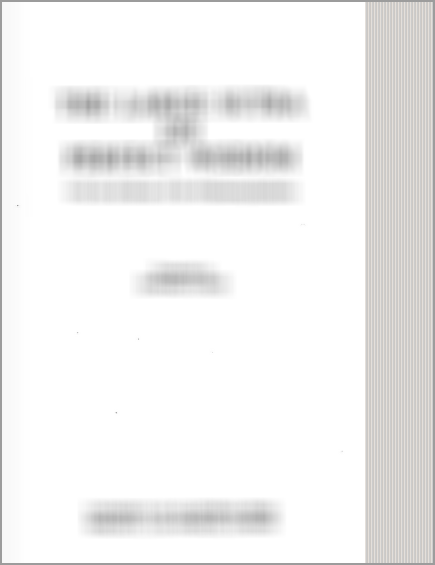Gitartha Samgraha (critical Study)
by Partha Sarathi Sil | 2020 | 34,788 words
This page relates ‘The Bhagavadgita and its commentaries’ of the study on Abhinavagupta’s Gitartha Samgraha commentary on the Bhagavad Gita: one of the core texts of Indian Philosophy. The Gitartha Sangraha is written in the light of Kashmir Shaivism and brings to Shaiva metaphysics and Yoga integrated in the Bhagavadgita. This study deals with Abhinava’s vision about the purpose of human existence and the accomplishment of salvation (i.e., self-realisation).
1. The Bhagavadgītā and its commentaries
The philosophical tradition of India has got its due pace in the academic circle across the world. In the entire range of Indian philosophical thought there are advices of dharma like what ought to be done and what ought not. The aim to dispel the human sorrow is sounded in their vision. The ultimate aim to be attained is described by some schools of philosophy as apavarga, some as mokṣa and other as attainment of Śivatva etc. The pursuit of supreme truth which is the prime objective as revealed in the six theistic philosophical schools is based on cognizing the pure existence of some eternal reality. This eternal reality is visualized somewhere as Lord Vāsudeva, somewhere as Lord Viṣṇu, somewhere as Mahāmāyā or Brahman or Śiva. The doctrines of all Indian philosophical systems have been unfolded in the chapters 23rd to 40th of the Bhagavadgītā which belongs to the Bhīṣmaparvan of the Mahābhārata. It is rightly said by Ācārya Śaṅkara that the Gītāśāstra is really unknowable[1]. The Bhagavadgītā is the song sung by Lord Vāsudeva Himself in the battlefield of Kurukṣetra. In the true meaning of the word Śrīmadbhagavadgītā, it becomes ‘belonging to the Lord’[2] and therefore, the sense of delivering from the lotus-face of Lord Padmanābha himself becomes obscure.
According to Śrimad-Bhāgavata, Śri Kṛṣna can be known not only as a god, but also as an intelligent human being.[3] The advice which was delivered by the Lord Kṛṣna the speaker of the Śrīmadbhagavadgītā, to his favourite disciple Arjuna in the battlefield of Kurukṣetra, have been interpreted in different ways by the preceptors of different sects. The Gītāśāstra is really inaccessible, but attractive. That is why the commentators have made commentaries of the Gītā to their own realizations for unfolding the hidden truth of Dharma. Some commentaries speak of the Gītā as having of non dualistic meaning, some speak of dualism and some of qualified non-dualism and some explain it as the cause of inspiration in the freedom movement. In this way the tradition of the different commentaries of the Gītā has come into being. An endeavor has been made to present a brief study of this tradition in this chapter of my thesis. Among the available commentaries of the Gītā, the Śāṅkarabhāṣya is known to be the earliest. It is, of course, a fact that before Śaṅkara, commentaries on the Gītā were written which is known from the commentaries composed by the later commentators. It can be known from the Śaṅkara’s commentary on the Gītā that according to Anandagiri, Acārya Bodhāyana composed a vṛtti of the Gītā intends to make a combination of Jñāna and Karman. About fifteen or sixteen commentaries in printed form are available commented upon by Rāmanuja, Vallabha, Nimbarka and others Ācāryas. Kṛṣnabhaṭṭa, a consecutive sixth disciple of Mādhvācārya had written the “Gītā-ṭīkā” in 14th Century A.D., Rāghavendra Shyam, the disciple of Sudhīndra Yati, composed three commentaries on the Gītā. Among the prominent commentaries on the Gītā mention may be made of Vallabhācarya’s Gītārthavivaraṇa, his son’s Gītārthatatparya, Śri Purusottama’s Amṛtataraṅginī and ‘Gītābhāṣyavivecana’ of Anandagiri. These commentaries are composed in Sanskrit. Beside these, the ‘Jñāneśvarī’ commentary written by Jñāneśvara in Marathi the ‘Gītārahasya’ by Lokmanya Tilaka are also prominent. Śri Aurobinda’s ‘Gītānibandhanicaya’ is a very valuable book which is but a Bhāṣya of the Gītā. Mahātmā Gāndhī whose commentary on the Gītā is familiar by the name of ‘Gāndhībhaṣya’ was written in Gujrati language. Gāndhījī made a spiritual explanation of the Gītā.
A list of the independent books as explanation of the Bhagavadgītā has been given below.
| Name of the Commentators | Name of the Commentary |
| Keśava kāśmīrī | Tattvaprakāśikā |
| Hanumān | Paiśācabhāṣya |
| Kalyānabhaṭṭa | Rasikaraňjinī |
| Jagaddhara | Bhagavadgītāpradīpa |
| Jayarama | Gītārthasārasaṅgraha |
| Baladeva Vidyābhūṣaṇa | Gītābhūṣāṇabhāṣya |
| Viśvanātha Cakravarttī | Sārārthavarṣiṇī |
| Madhusūdana Sarasvatī | Gūḍārthadīpikā |
| Mathurānanda | Bhagavadgītāprakāśa |
| Dattātreya | Prabodhacandrikā |
| Śivadayālu Śrīdharasvamī | Subodhinī |
| Sadānanda Vyāsa | Bhāvaprakāśa |
| Sūryapaṇḍita | Paramārthaprabhā |
| Nīlakaṇṭha (Son of Govindasūri) | Bhāvadīpikā |
| Nṛsimha-ṭhākura | Bhagavadgītārthasaṅgraha |
| Gokulacandra | Bhagavadgītārthasāra |
| Vādirāja | Bhagavadgītālakṣaṇa |
| Kaivalyānanda Sarasvatī | Bhagavadgītāsāra |
| Narahari | Bhagavadgītārthasārasaṅgraha |
| Viṭṭhala Dīkṣita | Bhagavadgītāhetunirṇaya |
Besides the above the Ācāryas like Arjuna Miśra, Janārdana Bhaṭṭa, Devabodha, Devasvāmī, Nandakiśor, Nārāyaṇa Sarvajña, Paramānanda Bhaṭṭācārya, Yajñanārāyaṇa, Ratnagarbha, Lakṣmaṇabhaṭṭa, Śrīnivāsārya, Vimalabodha, Madhyamandira, Varadarāja Vyāsatīrtha, SatyābhinavaYati, Kṛṣṇācārya, Vidyādhirāja, Jayarāma Jayatīrtha, Vaiśampāyana, Ājñeśvarapāla etc. are also commentators of the Gītā. Some more commentaries on the Gītā were also written and thus the tradition continued.
| Gītā-Commentator | Name of the Commentary | Commentator on the Commentary | Commentary name |
| Madhvācārya or Ānandatīrtha | Gītābhāṣya | Jayatīrtha | Prameyadīpikā |
| Madhvācārya | Bhagavadgītā-Tātparyanirṇaya | - | - |
| Rāmānuja | Gītābhāṣa | Veṅkaṭhanātha | Tātparyacandrikā |
| Śaṅkarācārya | Gītābhāṣya | Ānandagiri | Vivaraṇa |
| Śaṅkarācārya | Gītābhāṣya | Rāmānanda | Vyākhyā |
| Śaṅkarācārya | Gītābhāṣya | - | Bhāṣyotkarṣadīpikā |
| Yāmunācārya | Gītārthasaṅgraha | Nigamāntadeśika | Gītārthasaṅgraharakṣaṇa |
| Yāmunācārya | Gītārthasaṅgraha | Varāvaramuni | Gītārthasaṅgrahadīpikā |
| Yāmunācārya | Gītārthasaṅgraha | Devajaṭācārya | Bhagavadgītārthasaṅgrahaṭīkā |
| Madhusūdana Sarasvatī | Gūḍhārthadīpikā | Śrī-Dharmadattaśarman | Gūdārthadīpikā-Tattvāloka |
Footnotes and references:
[1]:
tadidaṃ gītāśāstraṃ samastavedārthasārasaṃgrahabhūtaṃ durvijñeyārtham, Upodghātaḥ, Śāṅkarabhāṣya.
[2]:
